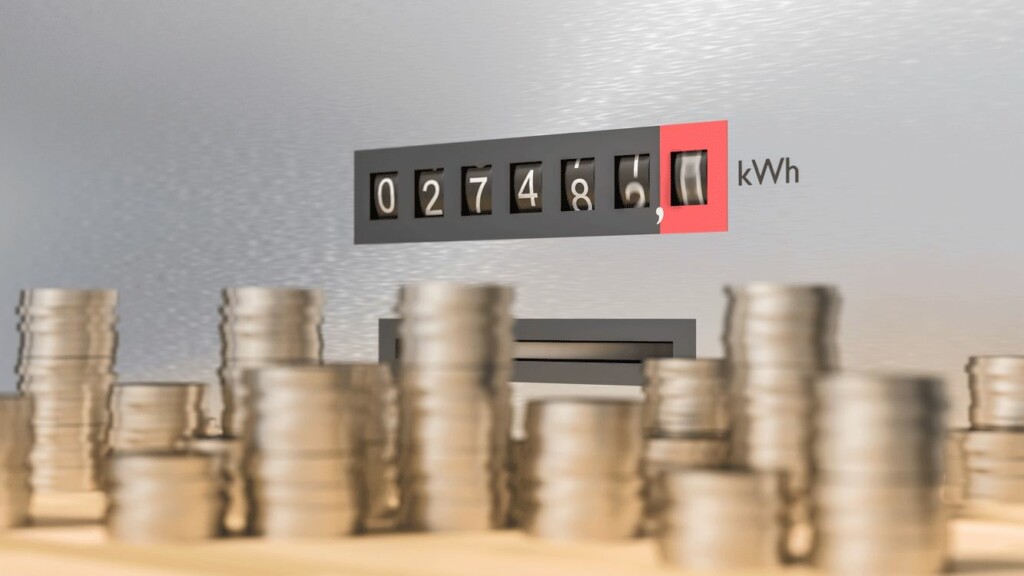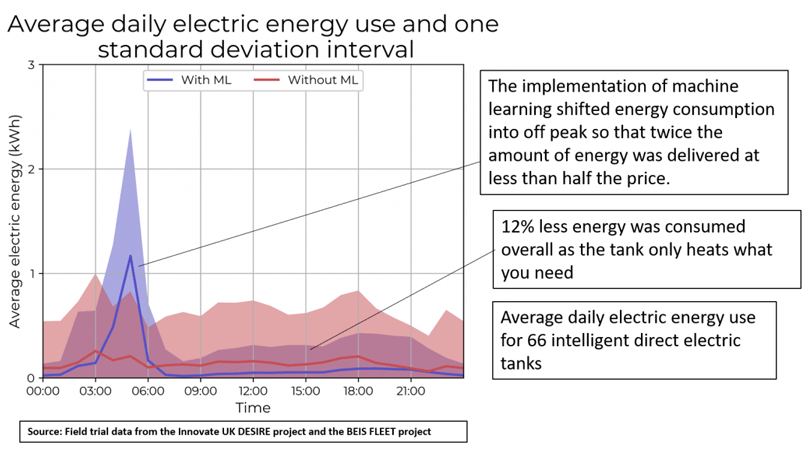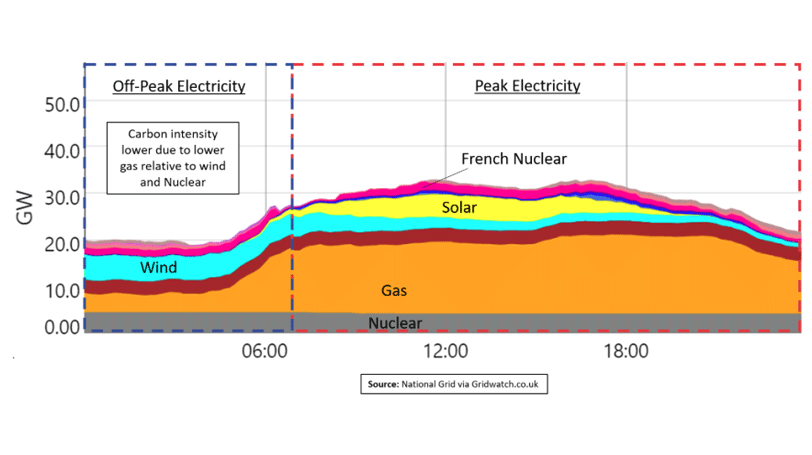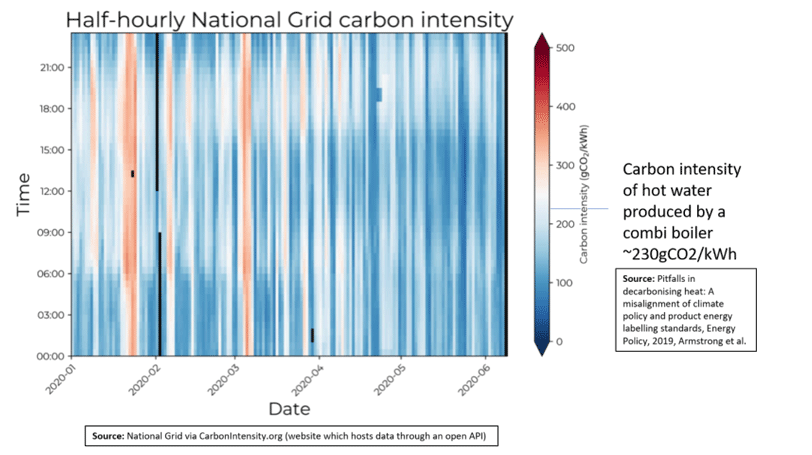
Delivering energy and CO2 savings through Machine Learning
Over the last 4 years, Mixergy have deployed 100s of smart hot water tanks through field trials with support from Innovate UK and BEIS. As part of the BEIS funded ‘PETE project’ (PETE Project: Power, Energy, Technology, Efficiency), Ocean Housing offered their residents the opportunity to apply for a funded replacement hot water cylinder.
The primary aim of the project was to demonstrate a scalable domestic demand side response (DSR) offering. DSR is where energy users change their electricity consumption patterns in response to a signal or incentive from the network operator. The ability to tap into flexibility sources ensures power supply and demand are matched, that the grid is not overloaded and that supplies are at the correct voltage and frequency across the network.
According to the Energy Savings Trust, the average household cost to generate hot water each year is £125 per annum and direct electric customers are usually confined to simple ‘Economy 7’ tariffs (a multi-rate plan, offering cheaper rates for the 7 hours overnight), in order to lower energy bills.
Each Mixergy tank is capable of adapting its own heating schedule according to the demand it measures. One of the most interesting insights has been that people rarely use more than a small fraction of their tank in any one time and often less than half of their installed capacity over the course of a single day. This gives our Machine Learning (ML) algorithms a significant amount of headroom to play with, enabling us to defer heating until electricity prices are cheap and adapt the state of charge required to last until the next off-peak (or low cost) time period. Where a gas system boiler is in use, the Mixergy tank is able to minimise heat losses and thermal cycling to derive gas savings in excess of 10%.
In order to quantify the value of ML for electric consumption, we monitored trial data from a subset of 66 electric tanks using an Economy 7 (E7) tariff. During off-peak hours, the price of electricity on E7 typically drops below 10p/kWh compared with a high of around 20p/kWh during the day.
Armed with this information, alongside a demand forecast synthesized by our on-board state of charge measurement, the Mixergy tank is able to shift a significant fraction of its heating into the off-peak hours.
The following image shows this shift in power usage associated with our E7 test fleet:

By allowing the tank to take charge of the heating schedules, we were able to reduce hot water running costs for Ocean Housing residents by 35%, from £125 to £80 per year (principally through better use of off-peak electricity).
Along with this, there was a 12% decrease in energy consumption via implementing ML (when compared to a Mixergy cylinder running a normal ‘customer set’ timed schedule) and a 16% reduction in carbon intensity (equating to >50kg of CO2 saved per tank, per annum of operation).
This 16% reduction in CO2/kWh came on top of the reduction in energy consumption achieved by only heating what you need.
The reason for this is that the UK’s electricity grid uses more wind and baseload nuclear as a proportion of total demand during off-peak hours at night. As electricity consumption increases during the day, most of the extra generation comes from gas power plants ramping up. Although solar energy starts to come online as well, the net effect of all this is that CO2/kWh trends up during the day.
The following graph (annotated from Grid-Watch) illustrates what is going on:

As our tanks shifted consumption to night rate electricity, the carbon intensity of hot water production dropped from 220gCO2/kWh to 183gCO2/kWh, which means that hot water from a Mixergy tank is now delivered at a 15% lower carbon intensity than an A-rated combi-boiler (see our journal paper, Pitfalls in decarbonising heat: A misalignment of climate policy and product energy labelling standards, which provides more info on combi boiler efficiencies).
The following figure gives a sense of the volatility of the UK’s carbon intensity in the first 6 months of 2020:

With the roll-out of smart meters and connected devices, it feels like we are on the cusp of some exciting developments in domestic energy which will allow us to facilitate more renewable energy by going beyond traditional tariffs such as E7.
The Mixergy tank can switch between using electricity or gas depending on price or carbon intensity acting as a real bridging technology towards the electrification of heat.
Contact us if you’d like to find out how you can join us on this mission!

